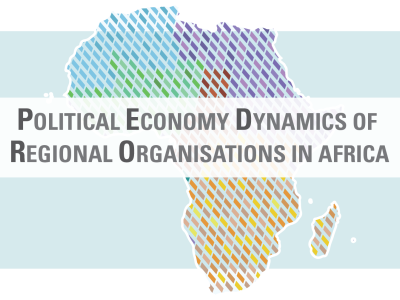
Co-creating New Partnerships for Financing Sustainable Development: The Furntech Partnership Model
The Furniture Technology Centre Trust (Furntech) is in the strategic business of wealth creation (Small, Medium and Micro Enterprises (SMME) development) and Human Resource Development (vocational skills development) in the furniture and wood products sector in South Africa. Its mission is to contribute to the growth of the industry by offering world-class training and innovative business technology incubation in order to assist in job and wealth creation in the furniture and wood products sector.
The success of Furntech is based on a Partner Driven Partnership (PDP) or Coalition model that has been implemented since our inception over 14 years ago. The fundamental principles of walking alongside and treating partners with respect and equality underpin our successful implementation of the PDP model.
This article will describe the background of Furntech; what we do and will demonstrate, through best practice, how Furntech has been able to sustain itself through the PDP model. We will also look at how the PDP model works and what are the major challenges of a PDP model.
About Furntech
Furntech was established as a public trust in 2000 in partnership with the South African Department of Trade and Industry (dti) and the Tibro Training Centre (TTC) in Sweden, through a bilateral agreement between the dti and the Swedish Industrial Development Agency (Sida). The South African Government’s Small Enterprise Development Agency Technology Programme (STP) replaced the dti as the state agency working with SMME development.
Furntech’s Board of Trustees consists of representatives from government, labour, the private sector, academia and other stakeholders. They provide strategic input and direction to the organisation.
Making a positive impact on local communities and businesses
Furntech’s programme is designed to nurture and accelerate the successful development of start-up and fledgling companies by providing entrepreneurs with an array of targeted resources and services. These services are developed and coordinated by the management team and are offered by both our staff and through our network of contacts. This focused approach has allowed us to invest our resources in the areas where we can have the greatest impact. It is our clients that create wealth and thus jobs that, in turn, stimulate the local, regional and national economies. All our interventions and activities are thus directed to creating an enabling environment for our clients.
The value added and success of Furntech’s Business Technology Incubation (BTI) model lies in its flexible combination of skills training and business development processes, infrastructure, and people. It is designed to nurture and protect new and existing small businesses by assisting entrepreneurs with all aspects of starting up and developing their companies into sustainable businesses. The process promotes entrepreneurship and encourages the formation and development of viable, registered small and micro businesses. Another key contributor to the success of the Furntech’s BTI model is the emphasis we place on developing the technical and management skills of all the businesses we work with.
Business Incubation as we have learned for more than a decade is a tool, when effectively implemented, can be the driver to meeting a variety of economic and socioeconomic policy needs, which include amongst others:
- Creating jobs and wealth;
- Poverty alleviation;
- Fostering a community’s entrepreneurial climate;
- Diversifying local economies;
- Building or accelerating growth of local industry clusters;
- Business creation and retention; and
- Revitalising local communities and neighbourhoods.
An extensive network of local and international partnerships is used to assist incubatees to improve the range and quality of their products and to market their activities (1).
An integrated partnership approach
One of the most important contributors to the success of the Furntech model has been our coalition and partnership approach. We have been able to manage and integrate the objectives of Furntech with the objectives of the donors successfully. Our donors and sponsors can be divided into five categories:
1. State institutions
The state institutions with which Furntech has had an integrated approach over the past fourteen years include the South African Government, the Provincial Government and Local Municipalities. As part of the establishment phase of an incubator, the objectives of the incubator and the state institution needs to be synchronised and agreed upon. It is therefore imperative that we firstly had a clear understanding of what we wanted to achieve and why we had been established. Secondly, they need to understand what the state institution’s objectives and goals are and by synchronising these sets of objectives through clearly defined deliverables and Key Performance Indicators (KPIs), the incubator can become a viable and successful entity. This integrated approach rather than a separatist approach means that we have agreement of what needs to be done. The how is an operational matter. Performance monitoring and evaluation is therefore relatively simple – have you or haven’t you achieved the agreed upon KPIs?
2. International partnerships (Tibro Training Centre in Sweden)
From the outset, our relationship with the Tibro Training Centre (TTC) was based on a PDP model. The initial period was blighted by the two different existing agendas. TTC wanted to implement the Swedish Model with very little understanding of the realities in South Africa, while we wanted to get the best of the Swedish experience within the context of the reality on the ground. We recognised that both agendas required extensive surgery if we were to be successful. This was achieved when we agreed that we needed to understand local conditions and we needed to adapt our approaches to ensure that both mandates were attainable. From this moment success was assured. All our plans were designed to attain the KPIs that were jointly agreed upon and we now had a common goal. A testimony of this approach is clearly illustrated by the fact that what was initially a three year agreement continued for 12 years. A further testimony of this approach is that the KPIs were reviewed on a regular basis to reflect the evolving partnership. The KPIs in the final three years bore no resemblance to the initial agreements.
3. Private sector including Corporate Social Investment (CSI)
Our partnership with the private sector is based on the basic principle that businesses are in business to deliver value to their stakeholders. This is a deliberate approach to move away from the principle of profit. Once we were able to “talk this language” and thus convince the private sector of their greater role in society, the process of developing sustainable partnerships became less of a challenge. The light bulb moment is when the private sector sees their value added not simply in terms of money but in terms of developing their stakeholders. The second light bulb moment is when the private sector can see direct benefits to their financial, social and environmental performance measures.
Again the key is that there is synergy between the KPIs of our private sector partners and us.
4. Academia
Partnerships with academia are probably the most difficult to achieve as their KPIs, until recently, were focused on the attainment of academic objectives. The growing shortage of funds has led academic institutions to see if they can convert their academic activities into commercial activities.
Once again we were able to align our objectives with theirs to develop a sustainable partnership by translating research into practice versus the achievement of the primary objectives.
5. Civil society
Civil society organisations, as implied by their name, focus on aspects that directly impact on local communities. They are sometimes referred to as the third sector being distinct from government and business. These institutions are usually established to address needs that the community feels is not adequately served by formal state institutions. Partnerships with such organisations must focus on their needs and how these can be adequately addressed. Our focus in these partnerships is in addressing local needs as compared to national priorities. In these instances our role is directed at vocational education for entrepreneurial activity and thus serves as a catalyst for local economic development in the community.
General operations of partnership model
We have always benefited from a multi-stakeholder approach that includes membership and association with various stakeholders in a variety of disciplines. This collaborative approach has been critical to us in developing sustainable partnerships that allow us to achieve our mandate. The key components of this collaborative approach are that the partnerships must:
- be based on mutual needs of the partners;
- be an open, transparent and honest relationship;
- not hinge on dictatorship, but should work together on achieving objectives;
- follow an integrated approach and not a separatist approach;
- work within the framework of existing objectives;
- build in compliance at inception;
- ideally have one set of criteria that satisfies stakeholders;
- have agreement from all stakeholders;
- build in Measurements of Results at inception;
- have agreement on value proposition at inception; and
- agree on predetermined results
Two further considerations are that the organisation should:
- have multi-stakeholder partnership to avoid dependency on single partner; and
- be able to cherry pick, (the ability to choose partners where there is synergy between mandates).
Challenges with the Partners Driven Partnership (PDP) model
With any model, no matter how well it is developed or implemented, due to the human factor involved, the model will face challenges. Some of the challenges of the PDP model include:
- competing interest, that is if the mandates of the parties are not the same;
- compliance requirements which could be a costly process;
- differences in the measurements of results;
- prescriptive approach by the donor;
- visibility of donors, which could be in contradiction with the organisation; and
- change of key personnel amongst partners could impact negatively on relations.
Nonetheless, since the Partners Driven Partnerships (PDP) model is based on the principle that all partners are equal, this serves to:
- reduce tension between the partners;
- promote the achievements of KPIs that add value to the society we work in; and
- increase productivity
The PDP model also reduces the risk of non-compliance or non-performance and for the organisation it means all their eggs are not in one basket.
Michael Reddy is Chief Executive Officer at Furntech, Cape Town, South Africa.
Footnote
1. The incubation process also benefits from membership of the National Business Incubation Association of America (NBIA), South African Business Technology Incubation Association (SABTIA), the United Kingdom Business Incubation (UKBI), the Africa Incubation Network (AIN), and other incubation forums.
This article was published in GREAT Insights Volume 3, Issue 6 (June 2014).



